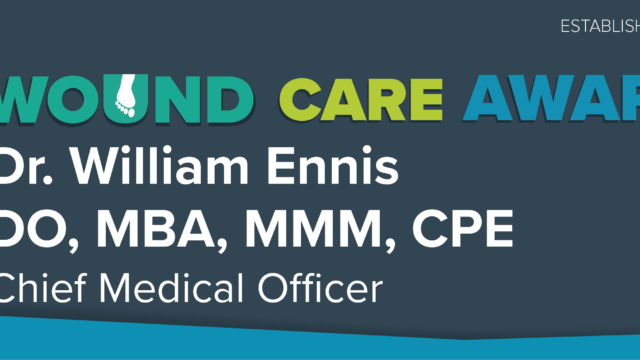How COVID-19 is Changing Wound Care
Written by Healogics Chief Medical Officer, Dr. William Ennis.

Desmond Bell, Michael Edmonds, William Li and I had a discussion on how COVID-19 has impacted wound care. We talked about the disruptions caused, the interrelationship between diabetes and COVID-19, and what we believe the future will look like.
 To give a little bit of background, Desmond Bell is the founder and president of the non-profit organisation Save A Leg, Save A Life Foundation, and chief medical officer at Omeza. Michael Edmonds is a diabetologist at King’s College Hospital, London, UK. William Li is an internal medicine physician at Harvard Medical School, Cambridge, USA, the CEO, president, and medical director of the Angiogenesis Foundation, and a board member of the American College of Wound Healing and Tissue Repair.
To give a little bit of background, Desmond Bell is the founder and president of the non-profit organisation Save A Leg, Save A Life Foundation, and chief medical officer at Omeza. Michael Edmonds is a diabetologist at King’s College Hospital, London, UK. William Li is an internal medicine physician at Harvard Medical School, Cambridge, USA, the CEO, president, and medical director of the Angiogenesis Foundation, and a board member of the American College of Wound Healing and Tissue Repair.
At the beginning of this pandemic, wound care was deemed a non-essential service. However, it was unclear as to who makes those decisions or what defines essential versus non-essential.
Nonetheless, deeming wound care as non-essential meant that certain wound care centers needed to be shut down temporarily. This, in turn, caused a spike in hospitalizations of patients with untreated, chronic wounds.
Wound care centers being shut down also caused an increased need for telemedicine. On one hand, telemedicine allows patients to be monitored, regardless of location, through smart technology. On the other hand, not everyone has access to these technologies and it can cause issues with provider access to documentation.
Throughout this pandemic, one thing was clear: patients suffering from diabetes are among the most vulnerable to COVID-19. Diabetes is the most common, underlying cause of chronic wounds. That being said, chronic wound patients are among the most vulnerable to contracting COVID-19.
As for the future, wound care specialists have an opportunity and the data to prove that wound care is an essential specialty.
Read the full article here.



